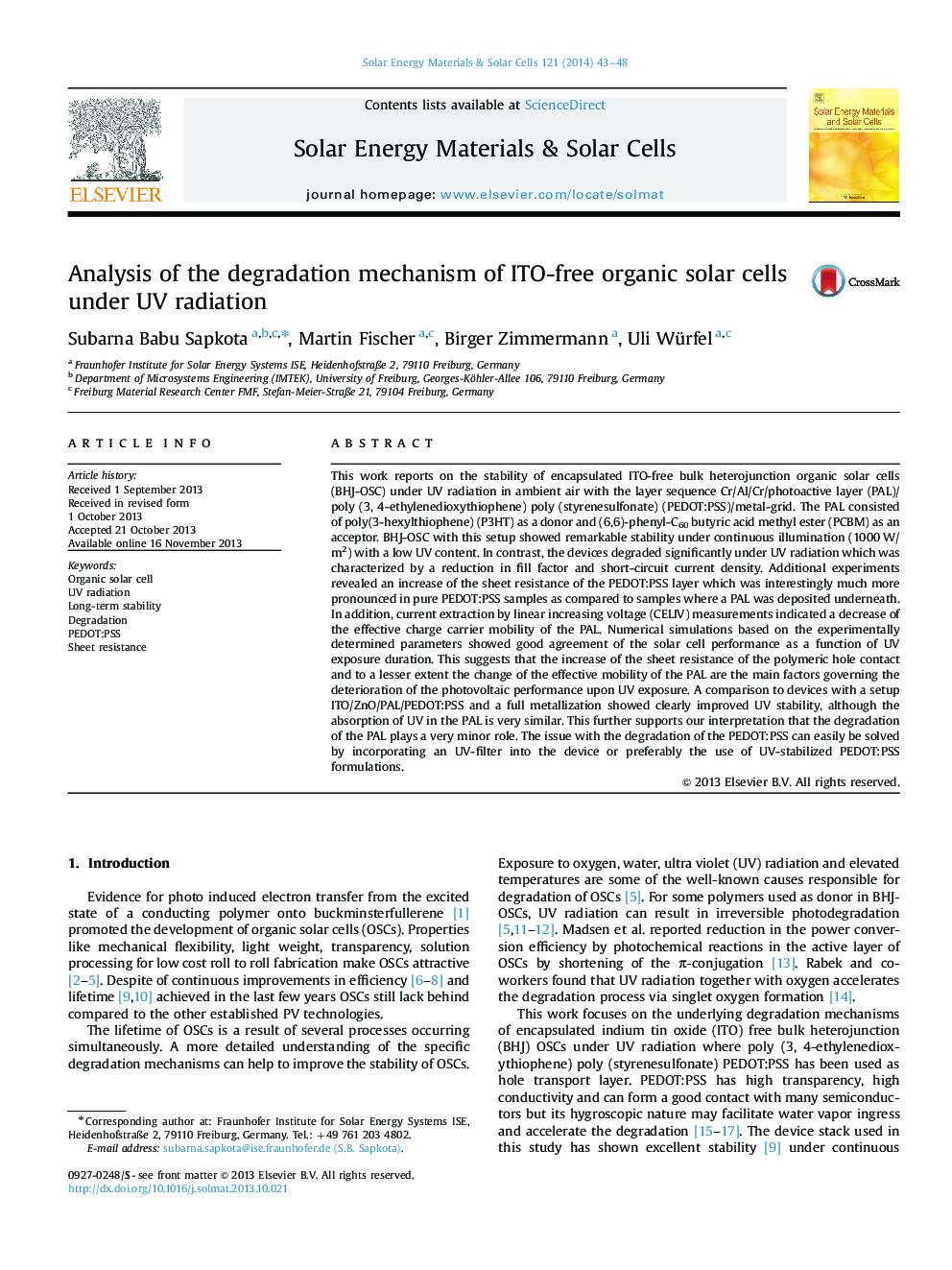| Article ID | Journal | Published Year | Pages | File Type |
|---|---|---|---|---|
| 78203 | Solar Energy Materials and Solar Cells | 2014 | 6 Pages |
•Exposure to UV-light of ITO-free OSCs leads to a major drop in FF and JSC.•Sheet resistance of PEDOT:PSS and CELIV mobility of photoactive layer were measured.•Simulations based on experimental findings were in excellent agreement with experiment.•Results suggest that CELIV mobility is not representing the steady state mobility.•UV induced degradation mainly caused by the increased resistance of PEDO:PSS.
This work reports on the stability of encapsulated ITO-free bulk heterojunction organic solar cells (BHJ-OSC) under UV radiation in ambient air with the layer sequence Cr/Al/Cr/photoactive layer (PAL)/poly (3, 4-ethylenedioxythiophene) poly (styrenesulfonate) (PEDOT:PSS)/metal-grid. The PAL consisted of poly(3-hexylthiophene) (P3HT) as a donor and (6,6)-phenyl-C60 butyric acid methyl ester (PCBM) as an acceptor. BHJ-OSC with this setup showed remarkable stability under continuous illumination (1000 W/m2) with a low UV content. In contrast, the devices degraded significantly under UV radiation which was characterized by a reduction in fill factor and short-circuit current density. Additional experiments revealed an increase of the sheet resistance of the PEDOT:PSS layer which was interestingly much more pronounced in pure PEDOT:PSS samples as compared to samples where a PAL was deposited underneath. In addition, current extraction by linear increasing voltage (CELIV) measurements indicated a decrease of the effective charge carrier mobility of the PAL. Numerical simulations based on the experimentally determined parameters showed good agreement of the solar cell performance as a function of UV exposure duration. This suggests that the increase of the sheet resistance of the polymeric hole contact and to a lesser extent the change of the effective mobility of the PAL are the main factors governing the deterioration of the photovoltaic performance upon UV exposure. A comparison to devices with a setup ITO/ZnO/PAL/PEDOT:PSS and a full metallization showed clearly improved UV stability, although the absorption of UV in the PAL is very similar. This further supports our interpretation that the degradation of the PAL plays a very minor role. The issue with the degradation of the PEDOT:PSS can easily be solved by incorporating an UV-filter into the device or preferably the use of UV-stabilized PEDOT:PSS formulations.
